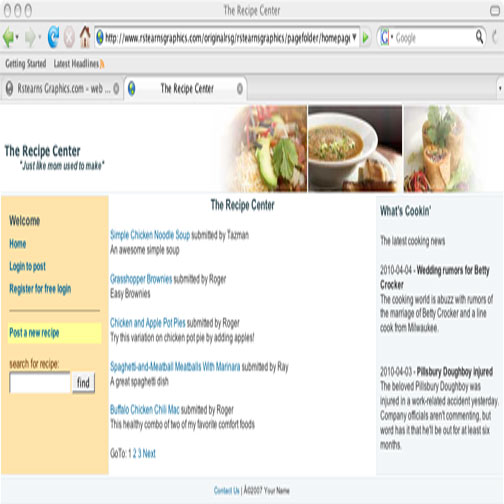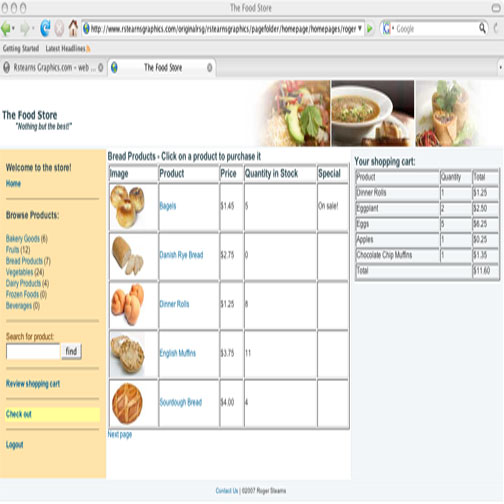Web Creations - Web programming
Web Programming
Although the whole world wide web is made possible by a variety of client side progamming languages (languages that are excuted by the user's browser on their own computer) such as HTML, CSS, JavaScript and XML which browsers interpret and display all the wonderful web sites available today. The Internet is becoming quite a dynamic and exciting place which requires a greater interactivity than just the standard old static web sites of yesterday.
Many web developers use what is called a server model, which is the combination of elements that make up a web application (a web site that is as much a program as a web site). These elements include first the Web server application -- for example, Apache or Microsoft Internet Information Server (IIS), then the server side progamming languages (languages that employ scripts on a web server which produce a response customized for each user's request to the website) -- PHP, VBScript, the Java family of languages, Python, Tcl, etc (the list of possible languages is long) and a relational database -- MySQL, MS-SQL, PostgreSQL, to name three.
Rstearns Graphics has gained experience with some of these critical internet programming languages that are the very backbone of the internet in the creation of these interactive web sites, "The Recipe Center" and "The Food Store" using the AMP server model (Apache, MySQL and PHP).
"The Recipe Center", is a dynamic interactive web application content management system which allows visitors to post and retrieve recipe information.
Visitors can view and search for recipes to an online database. Registered users will even be able to log in and add favorite recipes of their own. All submitted recipes and e-mail addresses will be collected in a MySQL relational database and, once approved, get displayed live on the site.
"The Food Store", is a fully-functional online food store application that allows customers to shop online, select items for purchase, and of course, check out.
This web application also has built in administration functions required to run the online store, and all the administration work required to maintain the product catalog, monitor stock levels, and process customer orders.
Dynamic Web pages allow you to easily change your content in real time without even touching the coding of the page. That's right: Without manually making any changes to the page itself, the information on the page can change. This means a web developer can keep the content on the page fresh so that what a visitor sees there now may be updated or replaced in a day, an hour, or a minute. The core layout of the Web page can remain the same (such as where the logo, links, and so forth display), but the data presented constantly changes.




